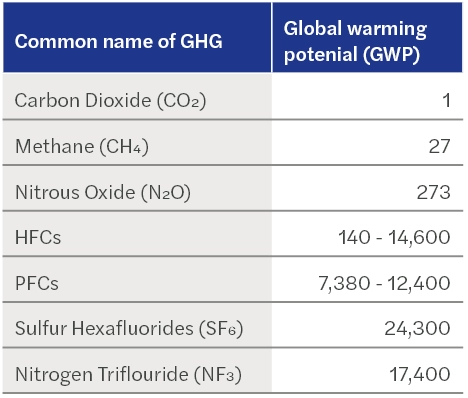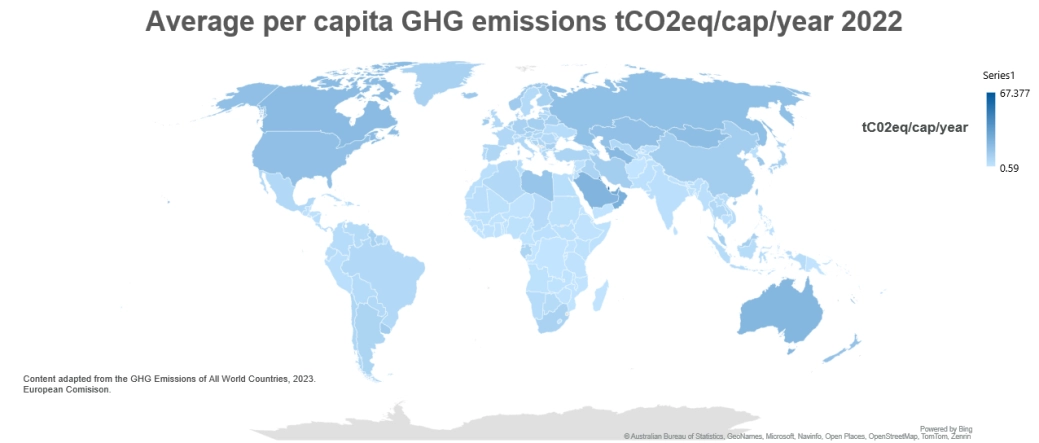1. How to calculate GHG emissions?
First, it is important to determine which part of the business (e.g., subsidiaries) should be included in the scope of calculation. Then, it is necessary to identify the different sources of emissions (e.g., fuel consumed by company-owned cars) and collect corresponding activity data (e.g., quantity of fuel consumed).
This latter figure can be multiplied by an emission factor to calculate the corresponding CO2e emitted (e.g., in relation to the use of company-owned cars). There are a number of published emissions factors that can be applied. However, the use of a carbon foot printing solution that includes include a long list of estimation factors make the process of calculating GHG emissions simpler.
2. What is an emission factor?
Emission factors are calculated ratio that indicates how much greenhouse gases (GHGs) are released into the atmosphere by a specific activity.
3. What is the Global warming potential (GWP)?
Global warming potential (GWP) measures how much a specific greenhouse gas (GHG) affects the atmosphere compared to carbon dioxide (CO2) for the same amount.
4. How do you define the organisational boundaries for GHG calculation?
The GHG protocol outlines two main approaches.
- Equity share approach: report GHG emissions from its operations based on its ownership percentage in the operation.
- Control approach: report all the greenhouse gas emissions from the operations the company has control over.
5. What is a transition plan?
A climate-related transition plan outlines the goals, steps, or resources of a company for moving to a lower-carbon economy, which includes actions like cutting down on greenhouse gas emissions.
6. What is net zero?
Net zero is originally a concept from physical climate science and means finding a balance between the emissions we create and the emissions we can remove from the air. However, this scientific concept has been operationalised and is now widely used by corporations, To achieve net zero, corporations shall focus on reducing GHG emissions.
7. What is the difference between carbon neutral and net zero?
Achieving carbon neutrality does not require to make any reduction in GHG emissions and it can be achieved simply through purchasing carbon offsets such as Australian Carbon Credit Units (ACCUs).
In contrast, Net zero requires focussing on significantly reducing GHG emissions, with carbon offsets only allowed for residual emissions.
8. What are carbon credits?
One carbon credit represents 1 tonne of carbon dioxide or CO2e that is removed from or not released (avoidance or reduction) into the atmosphere.
9. What is relationship between climate change and GHG emissions?
Climate change is fuelled by the increase in GHG emissions. The release of GHG emissions into the atmosphere is amplified by human activity and directly increases the trapping of greenhouse gases, which ultimately increases the retention of heat and severely affect our climate.
How can Forvis Mazars help?
- Carbon footprint assessment
- Net Zero strategy & transition / decarbonisation plan
- Physical Climate Risk Dashboard
- Carbon report assurance
This website uses cookies.
Some of these cookies are necessary, while others help us analyse our traffic, serve advertising and deliver customised experiences for you.
For more information on the cookies we use, please refer to our Privacy Policy.
This website cannot function properly without these cookies.
Analytical cookies help us enhance our website by collecting information on its usage.
We use marketing cookies to increase the relevancy of our advertising campaigns.





